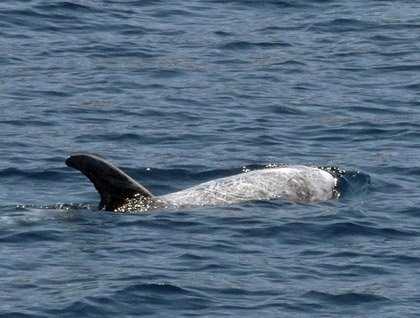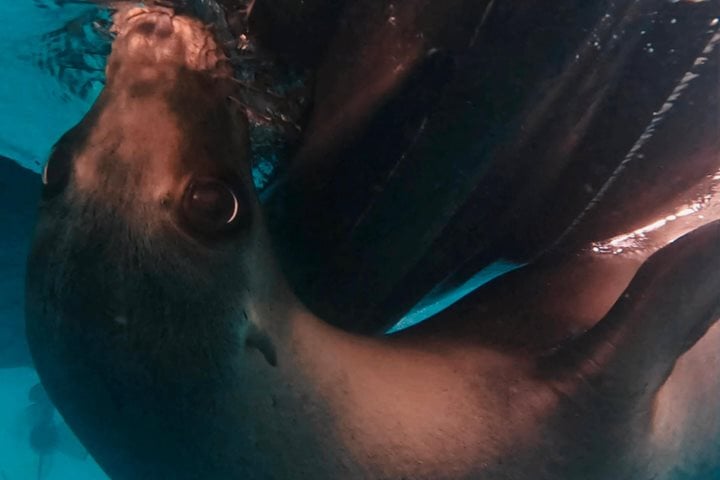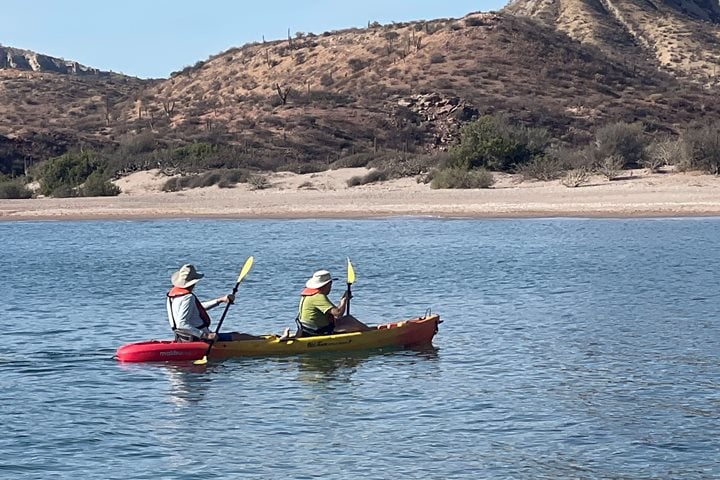Espiritu Santo National Park includes a gem of islands deeply incised by teal-colored bays, sandy beaches, rugged slopes, and a colony of California sea lions. We spent the entire day in this scenic area, first at Los Islotes, tiny islets where sea lions are the attraction, and later on the southern portion of Isla Espíritu Santo. The first outing of the day involved snorkeling. A dazzling array of colorful species surrounded us as we entered the underwater world. Schools of Pacific creolefish, yellowtail surgeons, and sergeant majors swam past, but the sea lions were by far the most captivating creatures. They seemed exceptionally curious about the clumsy humans in their world as they spun and swirled like ballerinas around us. Those who did not snorkel had the opportunity to watch sea lions from a drier position by cruising on our rubber landing craft.
After lunch, the ship motored towards Bonanza Bay, where we planned to go ashore later in the day. Along the way one of the naturalists spotted an unusual marine mammal, a Risso’s dolphin, only rarely seen here. It was within a group of bottlenose dolphins, so it was a challenge to find it among all the splashes. Risso’s dolphins are quite pale, however, so the ghostly color was conspicuous once we drew near. Their skin is typically covered with scratches, and this individual was no exception. Their heads are blunt, unlike the bottlenose dolphins. It was a real thrill to see such a special animal!
The ship’s anchor dropped in 17 feet of water near a crescent-shaped beach of white sand that stretched for miles. It was a delightful spot to spend our last afternoon together in the Sea of Cortez. People beach-combed, wandered into the desert, read a book, or went swimming. A few of the hikers spotted two black jackrabbits, an endemic species found only on this and an adjacent island. We remained at anchor for the evening and much of the night as darkness enveloped us, Orion appeared, and the dark sky became studded with stars.







